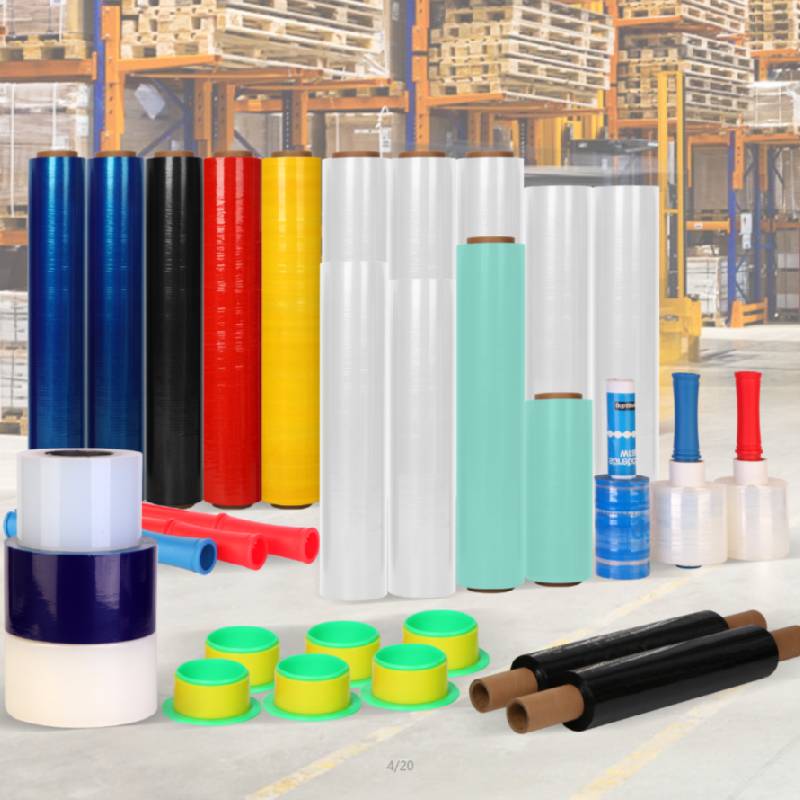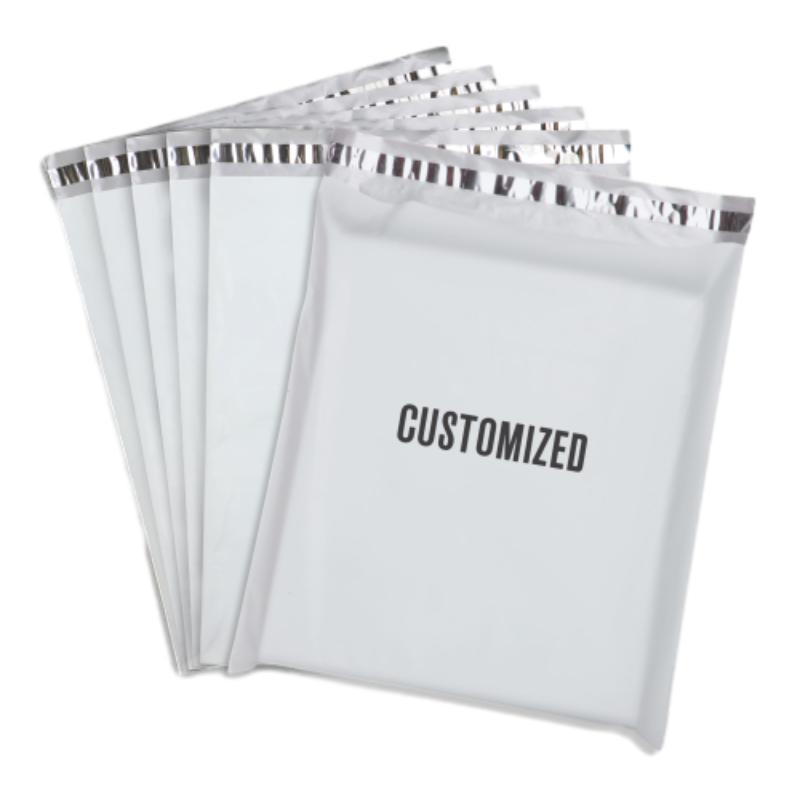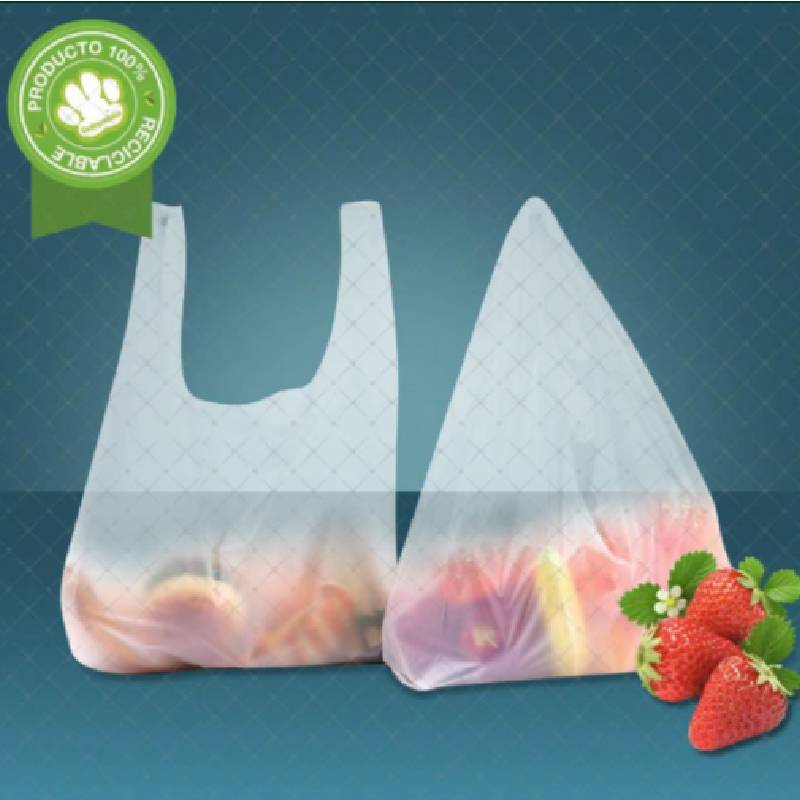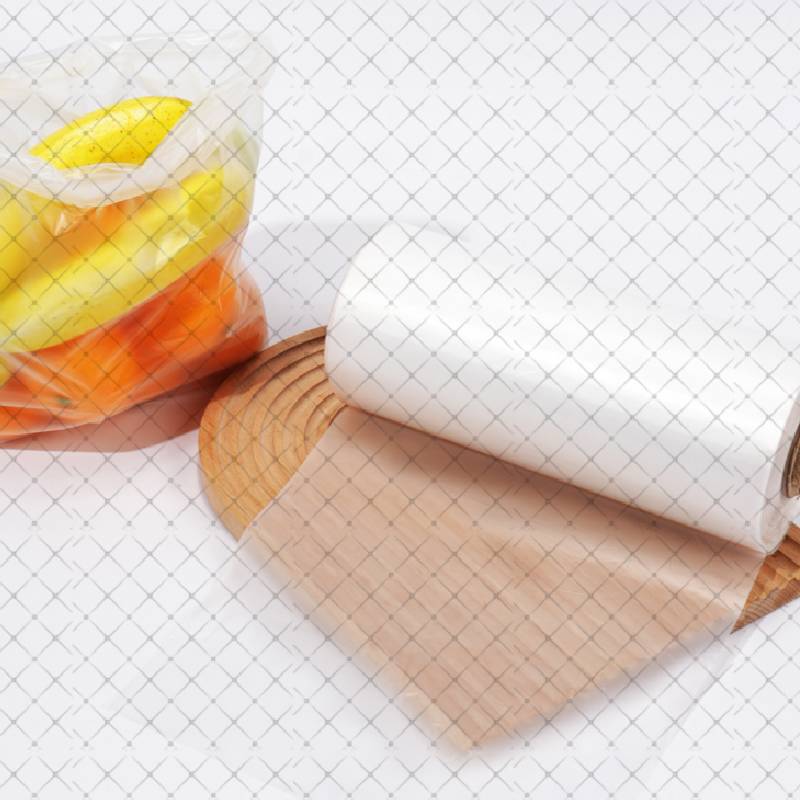Durable Silage Bale Wrap Film | Premium Forage Preservation
Advancing Forage Preservation: The Critical Role of Silage Bale Wrap Film
In modern agriculture, the efficient preservation of forage is paramount to livestock health and farm profitability. This is where silage bale wrap film plays an indispensable role. This specialized polymer film creates an anaerobic environment, essential for the fermentation process that transforms cut forage into nutritious silage. As the agricultural sector continually seeks to maximize feed quality and minimize waste, the demand for high-performance silage wrap film, also known as hay wrap film, has surged, driven by innovations in material science and processing technology. The global market for agricultural films, including silage film for sale, is projected to grow significantly, reaching an estimated USD 15.6 billion by 2027, with silage films being a key contributor due to their economic and nutritional benefits for livestock farming.
Current industry trends emphasize films with enhanced barrier properties, superior mechanical strength, and increased biodegradability or recyclability. Farmers are increasingly prioritizing films that offer exceptional UV stability, puncture resistance, and optimal stretch characteristics to ensure robust bale integrity and effective ensiling. This focus on advanced technical specifications reflects a broader industry movement towards sustainable and efficient farming practices, where every input, including bale wrap film suppliers, is scrutinized for its environmental impact and operational performance.
Manufacturing Excellence: The Production Process of Silage Bale Wrap Film
The creation of high-quality silage bale wrap film involves a sophisticated manufacturing process designed to impart critical performance characteristics. The primary material utilized is Linear Low-Density Polyethylene (LLDPE), often blended with various additives to enhance specific properties such as UV resistance, tack, and puncture strength. The process typically employs co-extrusion technology, ensuring a multi-layered film with optimized functionality.
Detailed Process Flow:
- 1. Raw Material Sourcing & Blending: High-grade LLDPE resins are selected for their excellent stretch, puncture resistance, and sealing properties. These virgin polymers are then meticulously blended with specialized additives, including UV stabilizers (e.g., HALS - Hindered Amine Light Stabilizers) to protect against solar degradation, tackifiers (e.g., polyisobutylene - PIB) for film adhesion, and anti-static agents. This blending occurs under controlled conditions to ensure homogeneity.
-
2. Co-Extrusion (Blown or Cast Film):
- Blown Film Extrusion: Polymer pellets are melted and pushed through an annular die, forming a molten tube. This tube is then inflated with air, creating a bubble that is stretched both longitudinally and transversely (biaxial orientation). This method typically yields films with balanced mechanical properties, good tear resistance, and high clarity.
- Cast Film Extrusion: Molten polymer is extruded through a flat die onto a highly polished, water-cooled roll. The rapid cooling solidifies the film. Cast films are known for their excellent clarity, smooth surface finish, and good tear resistance. Both methods allow for multi-layer co-extrusion, where different polymer blends are simultaneously extruded to form a film with distinct layers, each contributing specific properties (e.g., an adhesive layer, a barrier layer, an outer protective layer).
- 3. Cooling & Stretching: After extrusion, the film is carefully cooled and, in some cases, further stretched to achieve the desired thickness and enhance its mechanical properties, such as tensile strength and elongation at break. This controlled stretching is critical for optimizing the film's ability to conform tightly to the bale.
- 4. Winding & Slitting: The continuous film is wound onto large master rolls. These master rolls are then precisely slit into the required widths and re-wound onto smaller cores, ready for packaging. Advanced tension control systems ensure uniform roll density.
- 5. Quality Control & Testing: Throughout the entire process, rigorous quality control measures are implemented. This includes continuous online monitoring of film thickness, width, and surface quality. Post-production, samples from each batch undergo comprehensive laboratory testing to ensure adherence to specified performance metrics.
Testing Standards & Certifications:
Our manufacturing facilities adhere to stringent quality management systems, evidenced by ISO 9001:2015 certification. Products are regularly tested against international standards to verify performance:
- ASTM D882: Standard Test Method for Tensile Properties of Thin Plastic Sheeting.
- ASTM D1709: Standard Test Methods for Impact Resistance of Plastic Film by the Free-Falling Dart Method (for puncture resistance).
- ASTM D1922: Standard Test Method for Propagation Tear Resistance of Plastic Film and Thin Sheeting by Pendulum Method (for tear resistance).
- ISO 7765: Plastics - Film and sheeting - Determination of impact resistance.
- UV Stability Testing: Accelerated weathering tests to simulate prolonged sun exposure and assess film degradation.
Target Industries & Advantages:
The primary target industry is agriculture, specifically dairy, beef, and sheep farming. The advantages of using our silage bale wrap film are manifold:
- Enhanced Forage Preservation: Creates an optimal anaerobic environment for lactic acid fermentation, preserving nutrient content and palatability.
- Reduced Spoilage: Superior oxygen barrier properties minimize fungal and bacterial growth, significantly reducing dry matter losses, which can exceed 20% in poorly preserved silage.
- Increased Feed Value: Maintains higher levels of metabolizable energy and crude protein compared to traditional methods, directly impacting animal performance and milk yield.
- Durability & Weather Resistance: High puncture and tear resistance, combined with advanced UV stabilization, ensures bale integrity in diverse weather conditions for an estimated service life of 12-18 months post-wrapping.
- Operational Efficiency: Consistent roll quality and high tack facilitate smooth, trouble-free wrapping operations, reducing downtime and material waste.

Technical Specifications and Performance Parameters
Understanding the technical specifications of silage bale wrap film is crucial for selecting the optimal product for specific agricultural needs. These parameters dictate the film's performance in terms of durability, preservation capability, and operational efficiency.
Standard Product Specification Table:
| Parameter | Typical Value | Test Method (e.g., ASTM/ISO) |
|---|---|---|
| Material | LLDPE (Linear Low-Density Polyethylene) with additives | Material Composition Analysis |
| Thickness | 20-25 microns (0.8-1.0 mil) | ASTM D374 / ISO 4593 |
| Width | 500mm, 750mm (20", 30") | Dimensional Measurement |
| Length | 1500m - 2000m (4921ft - 6562ft) | Dimensional Measurement |
| Pre-Stretch Ratio | 50-80% | In-situ Measurement / Machine Compatibility |
| Tensile Strength (MD/TD) | >30 MPa / >25 MPa | ASTM D882 / ISO 527-3 |
| Elongation at Break (MD/TD) | >600% / >700% | ASTM D882 / ISO 527-3 |
| Puncture Resistance (Dart Drop) | >100g (25 micron film) | ASTM D1709 / ISO 7765-1 |
| Tear Resistance (Elmendorf) | >100 N/mm (MD/TD) | ASTM D1922 / ISO 6383-2 |
| UV Stability | 12-month outdoor exposure equivalent (with appropriate UV additives) | ASTM G154 / ISO 4892-3 (Accelerated Weathering) |
| Tack Level (Auto-adhesion) | Optimized for layer-to-layer adhesion | Internal Method / Industry Standard |
| Color | White, Green, Black, Light Green | Visual / Spectrophotometric |
Product Comparison: Standard vs. Premium Silage Film
While standard silage wrap film offers reliable performance, premium options provide enhanced features for demanding applications or longer storage periods.
| Característica | Standard Silage Wrap Film | Premium Silage Wrap Film |
|---|---|---|
| Material Composition | Basic LLDPE blend with standard additives. | Advanced LLDPE/Metallocene blend, enhanced UV stabilizers, higher PIB content. |
| Oxygen Barrier Properties | Good (sufficient for typical storage). | Excellent (multi-layer co-extrusion for superior OTR, e.g., <1000 cm³/(m²·24h)). |
| Puncture & Tear Resistance | Reliable for average handling. | Significantly higher, ideal for rocky fields or challenging conditions. |
| UV Stabilization | Rated for 12 months. | Rated for 15-18 months, crucial for longer outdoor storage. |
| Pre-Stretch Capability | Up to 70%. | Up to 80% and beyond, reducing film consumption per bale. |
| Tack / Adhesion | Good, provides secure wrapping. | Optimized for extreme conditions, ensuring tight seals even in cold or humid weather. |
| Cost-Effectiveness | Lower initial cost per roll. | Higher initial cost, but potentially lower cost per bale due to higher stretch and reduced spoilage. |
Versatile Application Scenarios for Silage Film
The adaptability of silage bale wrap film makes it suitable for a wide array of forage crops and diverse farming conditions globally. Its primary function is to create an airtight seal around baled forage, facilitating anaerobic fermentation and preserving nutritional value.
- Grass Silage: The most common application. Grass, cut at optimal moisture content (typically 35-50% dry matter), is baled and immediately wrapped. This is crucial for dairy farms seeking high-quality feed year-round, especially in regions with distinct growing seasons. The film protects against oxygen ingress, preventing aerobic spoilage and retaining digestible nutrients.
- Alfalfa/Lucerne Silage: High-protein forages like alfalfa benefit immensely from proper ensiling. The robust oxygen barrier provided by quality silage wrap film prevents mold and yeast growth, which can rapidly degrade protein content and palatability.
- Cereal Silage (Wheat, Barley, Oats): Increasingly used, particularly in arid or semi-arid regions where perennial pastures are less reliable. Cereal silages, often harvested at the dough stage, require effective sealing to ensure proper fermentation and minimize field losses.
- Maize/Corn Silage: While typically stored in bunkers or towers, some farmers utilize large round bales for maize silage, especially for smaller herds or to manage feed allocation. The film must be highly resistant to puncture from the coarser stalks.
- Forage Sorghum & Sudangrass: These drought-tolerant crops can be effectively ensiled in bales, offering a flexible feed option. The film's UV stability is critical here, as these crops are often grown in sun-intensive environments.
- Haylage for Equine & Small Ruminants: For sensitive animals like horses, haylage (silage with higher dry matter content, ~50-65%) provides a dust-free and palatable feed. The integrity of the hay wrap film is paramount to prevent spoilage that could be harmful.

The choice of film thickness and number of layers wrapped often depends on the specific crop, anticipated storage duration, and local climatic conditions. For instance, in regions with harsh winters or prolonged storage, a thicker film or more layers (e.g., 6-8 layers instead of the standard 4) are recommended to enhance barrier properties and reduce the risk of mechanical damage.
Unrivaled Technical Advantages
Nuestro silage bale wrap film is engineered to deliver superior performance and tangible benefits, setting a benchmark for forage preservation. These technical advantages translate directly into economic and operational gains for agricultural businesses.
- Optimized Oxygen Barrier (OTR): Our multi-layer co-extruded films achieve an exceptionally low Oxygen Transmission Rate (OTR), typically less than 1000 cm³/(m²·24h) at standard conditions. This superior barrier prevents oxygen from entering the bale, effectively inhibiting aerobic spoilage organisms like molds and yeasts, which are major causes of dry matter loss and nutrient degradation in silage.
- Exceptional Puncture and Tear Resistance: Formulated with advanced LLDPE resins and processed through precise co-extrusion, our films boast high impact and tear strength. This minimizes the risk of damage from sharp stalks, rocks, or animal interference during handling, transportation, and storage, ensuring the integrity of the anaerobic seal.
- High UV Stability: Incorporating high-quality Hindered Amine Light Stabilizers (HALS) directly into the polymer matrix, our film offers guaranteed UV protection for up to 12-18 months of outdoor exposure in varying climates. This prevents film degradation, cracking, and loss of mechanical properties, which could compromise the silage quality.
- Consistent Tack and Adhesion: The carefully balanced formulation includes optimal levels of Polyisobutylene (PIB) tackifiers, ensuring consistent layer-to-layer adhesion. This creates a tight, impenetrable seal around the bale, even in challenging environmental conditions (e.g., cold weather, dusty fields), preventing air pockets and maximizing fermentation efficiency.
- Superior Stretch and Elasticity: Engineered for high pre-stretch capability (typically 70-80%), our film allows for tighter wrapping with less material, enhancing cost-efficiency. Its excellent elasticity ensures the film returns to its original shape, maintaining a firm, wrinkle-free wrap that adapts to slight bale movements without losing its seal.
- Optimized Opacity and Color Options: Available in high-opacity colors (white, green, black) that reflect or absorb solar radiation effectively. White film reflects heat, keeping bale temperatures lower in hot climates, while black film absorbs heat, beneficial in colder regions. This thermal management contributes to more stable fermentation and reduced nutrient degradation.
- Reliable Machine Performance: Our films are designed for smooth, trouble-free operation on all major bale wrapping machinery, from individual wrappers to combination baler-wrappers. Consistent roll tension, minimal static charge, and consistent thickness reduce film breakages and downtime, boosting operational productivity.

Selecting the Right Partner: Vendor Comparison for Silage Wrap Film
When evaluating bale wrap film suppliers, it's essential for B2B decision-makers to look beyond just the price per roll. A comprehensive assessment considers product quality, manufacturing expertise, supply chain reliability, and technical support. Our commitment to these areas positions us as a leading choice.
- Manufacturing Expertise and Quality Control: Verify the supplier's adherence to international standards like ISO 9001:2015. Look for detailed information on their raw material sourcing, co-extrusion technology, and in-house testing capabilities (e.g., for tensile strength, puncture resistance, UV stability). A robust QC process ensures batch-to-batch consistency.
- Product Performance Guarantees: Reputable suppliers offer clear performance guarantees for their silage film for sale, including UV stability duration and mechanical properties. This demonstrates confidence in their product.
- Supply Chain Reliability: Evaluate lead times, stock availability, and logistical capabilities. For agricultural operations, timely delivery during critical harvest periods is non-negotiable. Our established logistics network ensures efficient fulfillment.
- Technical Support and After-Sales Service: Assess the level of technical expertise offered. Can the supplier provide guidance on optimal wrapping techniques, troubleshoot machine compatibility issues, or advise on film selection for specific forage types and climates?
- Customization Capabilities: As farming operations vary, the ability to provide customized solutions (e.g., specific widths, lengths, colors, or enhanced properties) is a significant advantage.
- Sustainability Initiatives: Increasingly important are suppliers who offer solutions for film recycling or are developing more sustainable materials.
With over two decades of experience in polymer film manufacturing, our company prides itself on a legacy of innovation and customer satisfaction. Our products are trusted by leading agricultural cooperatives and independent farmers across various continents, a testament to our authoritativeness in the sector.
Customized Solutions for Diverse Agricultural Needs
Recognizing that no two farming operations are identical, we offer tailored solutions for silage wrap film to meet specific requirements for different crops, climates, and machinery. Our approach emphasizes flexibility and precision engineering.
- Thickness and Layer Configurations: While 20-25 micron films are standard, we can provide thicker gauges for increased puncture resistance in challenging conditions or for very long storage periods. Our co-extrusion capabilities allow for precise control over layer composition, optimizing properties like tack, barrier, and strength.
- Width and Length Customization: Standard widths (500mm, 750mm) cater to most balers, but specific machinery or regional preferences may require alternative dimensions. We offer bespoke widths and roll lengths to optimize efficiency and minimize changeover times on specific baler models.
- Color Variation and UV Protection Levels: Beyond standard white, green, and black, we can develop films in other colors based on order volume. More critically, UV stabilization can be customized for regions experiencing extreme solar radiation, extending the film's outdoor life beyond the standard 12 months to 15 or 18 months, if required.
- Enhanced Mechanical Properties: For forage types prone to sharp stalks (e.g., corn silage, tough cereal crops) or for farms operating in rocky terrain, we can engineer films with increased dart drop impact strength and tear resistance. This often involves specific polymer blends or multi-layer structures designed for maximum resilience.
- Tack Level Adjustment: The tack (adhesion) of the hay wrap film can be fine-tuned. Higher tack is beneficial in cold or humid climates to ensure a strong seal, while lower tack may be preferred for easier bale separation or in very dusty conditions.
Our technical team works closely with clients to understand their specific operational challenges and objectives, translating these into precise film specifications. This collaborative approach ensures that the customized silage film for sale delivers optimal performance and value.
Real-World Application Case Studies
Nuestro silage bale wrap film has consistently delivered measurable improvements in forage preservation and operational efficiency for clients globally. Here are two illustrative case studies:
Case Study 1: Large-Scale Dairy Farm in the Midwest, USA
- Client Profile: A dairy operation managing over 1,500 cows, relying heavily on high-quality alfalfa and grass silage for optimal milk production. They utilized a high-speed round baler-wrapper combination.
- Challenge: The farm experienced significant silage spoilage (estimated 15-20% dry matter loss) due to inconsistent film quality, leading to frequent film breakages during wrapping and poor bale seals. This resulted in nutrient degradation and increased feed costs.
- Solution: We supplied our premium 7-layer co-extruded silage wrap film (25 micron, 750mm width) with enhanced puncture resistance and a guaranteed 80% pre-stretch. Our technical team also provided on-site training for optimal wrapper settings.
-
Results:
- Reduced film breakages by over 70%, significantly increasing wrapping efficiency.
- Silage spoilage dropped to below 5% (verified by laboratory analysis of feed samples), preserving an estimated $50,000 worth of feed annually.
- Improved feed palatability and nutrient density led to a noticeable increase in average milk yield per cow.
- Positive feedback on film's consistent performance across varying weather conditions during harvest.
Case Study 2: Contract Baler in Northern Europe
- Client Profile: A contract baling service operating across multiple farms in a region known for variable, often damp, weather and late harvests. They needed a versatile silage film for sale that performed reliably across diverse conditions.
- Challenge: Their previous supplier's film struggled with adequate tack in cold, damp conditions, leading to poor bale seals and increased customer complaints regarding spoiled silage. They also faced issues with inconsistent film strength, causing machinery jams.
- Solution: We provided our specialized cold-weather formula hay wrap film, engineered with enhanced tackifiers and superior elasticity. This film maintains its adhesive properties even at lower temperatures, ensuring a robust, airtight seal.
-
Results:
- Eliminated complaints related to poor bale sealing, even when wrapping in challenging weather.
- Reduced film application errors and machine downtime, allowing them to complete more contracts per season.
- Increased customer satisfaction and retention, solidifying their reputation as a reliable service provider.
- The contractor noted improved efficiency due to the film's consistent stretch, resulting in more bales per roll.
Trust and Transparency: FAQs, Lead Times, Warranty, & Support
Frequently Asked Questions (FAQs)
-
Q: How many layers of silage wrap film should I apply for optimal preservation?
A: For most crops and conditions, 4-6 layers are recommended. In areas with higher risk of damage (e.g., pests, rough handling) or for longer storage periods (over 12 months), 6-8 layers of silage wrap film are advisable to enhance the oxygen barrier and mechanical protection. -
Q: What is the ideal moisture content for forage before baling and wrapping?
A: Forage for silage should ideally be baled at 35-50% dry matter (65-50% moisture). Baling outside this range can lead to suboptimal fermentation or increased spoilage risk, regardless of the quality of the hay wrap film. -
Q: Can the color of the silage film affect silage quality?
A: Yes, color plays a role in managing bale temperature. White film reflects more sunlight, keeping bales cooler in hot climates, which can be beneficial for fermentation. Black film absorbs heat, which can be advantageous in colder climates to promote initial fermentation. Green offers a balance and aesthetic blending with the landscape. -
Q: What is the shelf life of unwrapped silage film?
A: Our silage film for sale, when stored correctly in its original packaging, away from direct sunlight and extreme temperatures, has a shelf life of at least 24 months prior to use.
Lead Time & Fulfillment Details
Standard lead time for most orders of silage bale wrap film is 2-4 weeks, depending on order volume and specific customization requirements. We maintain strategic stock levels of popular widths and lengths to accommodate urgent demands during peak seasons. For large-volume or highly customized orders, specific timelines will be provided upon inquiry. We operate a robust global logistics network to ensure efficient and timely delivery to your location, offering various shipping options to meet your operational schedules.
Warranty Commitments
We stand behind the quality of our silage wrap film with a comprehensive warranty. Our films are guaranteed against manufacturing defects and are certified for specific UV stability, typically 12 months from the date of wrapping, under normal storage conditions as per industry best practices. Any claims for material defects or performance failures outside of normal operational wear will be addressed promptly and professionally in accordance with our terms and conditions.
Customer Support Information
Our dedicated customer support team is available to assist with product selection, technical inquiries, order processing, and after-sales support. You can reach us via:
- Correo electrónico: sales@liyabiobag.com
- Phone: +86-755-88888888 (Example Number)
- Website: Visit liyabiobag.com for our contact form and comprehensive product resources.
Our technical specialists are available for consultation to ensure you get the maximum value from our silage bale wrap film products.
References
- Smith, S. D. (2018). The Impact of Silage Film Quality on Forage Preservation and Animal Performance. Journal of Agricultural Science, 156(3), 201-210.
- USDA National Agricultural Library. (2021). Silage Production and Management Best Practices. Retrieved from www.nal.usda.gov.
- European Commission. (2019). Guidelines for the Sustainable Use of Agricultural Plastics. Official Journal of the European Union, C 237/01.
- American Society for Testing and Materials (ASTM International). (2022). Standards for Plastic Film Testing. Retrieved from www.astm.org.
- International Organization for Standardization (ISO). (2020). Standards for Quality Management Systems and Plastic Properties. Retrieved from www.iso.org.
-
Durable Silage Bale Wrap Film | Premium Forage PreservationNoticiasAug.29,2025
-
Premium Poly Mailer Bags - Secure & Lightweight Shipping SolutionsNoticiasAug.28,2025
-
No-Sew Methods for Making a Drawstring BagNoticiasAug.22,2025
-
The Problem with Plastic Trash Bags in LandfillsNoticiasAug.22,2025
-
Biodegradable Alternatives to Shirt BagsNoticiasAug.22,2025
-
Creative Ways to Reuse Poly Wrap Roll at HomeNoticiasAug.22,2025
-
¡Ten la libertad de personalizar tus sobres personalizados como quieras! ¡Nuestro soporte de embalaje dedicado le ayudará a brindarle la experiencia de envío que necesita para elevar su experiencia de envío al siguiente nivel! ¡Empiece a causar una buena impresión en sus clientes y destaque entre sus competidores! -
LIYA utiliza materias primas de alta calidad que compra directamente a grandes empresas nacionales y extranjeras, como PetroChina, Sinopec, Sabic, Equate, ExxonMobil, Dow Chemical, Total y Borouge, lo que garantiza la ventaja de precio y la calidad de las materias primas. -
LIYA utiliza materias primas de alta calidad que compra directamente a grandes empresas nacionales y extranjeras, como PetroChina, Sinopec, Sabic, Equate, ExxonMobil, Dow Chemical, Total y Borouge, lo que garantiza la ventaja de precio y la calidad de las materias primas.





